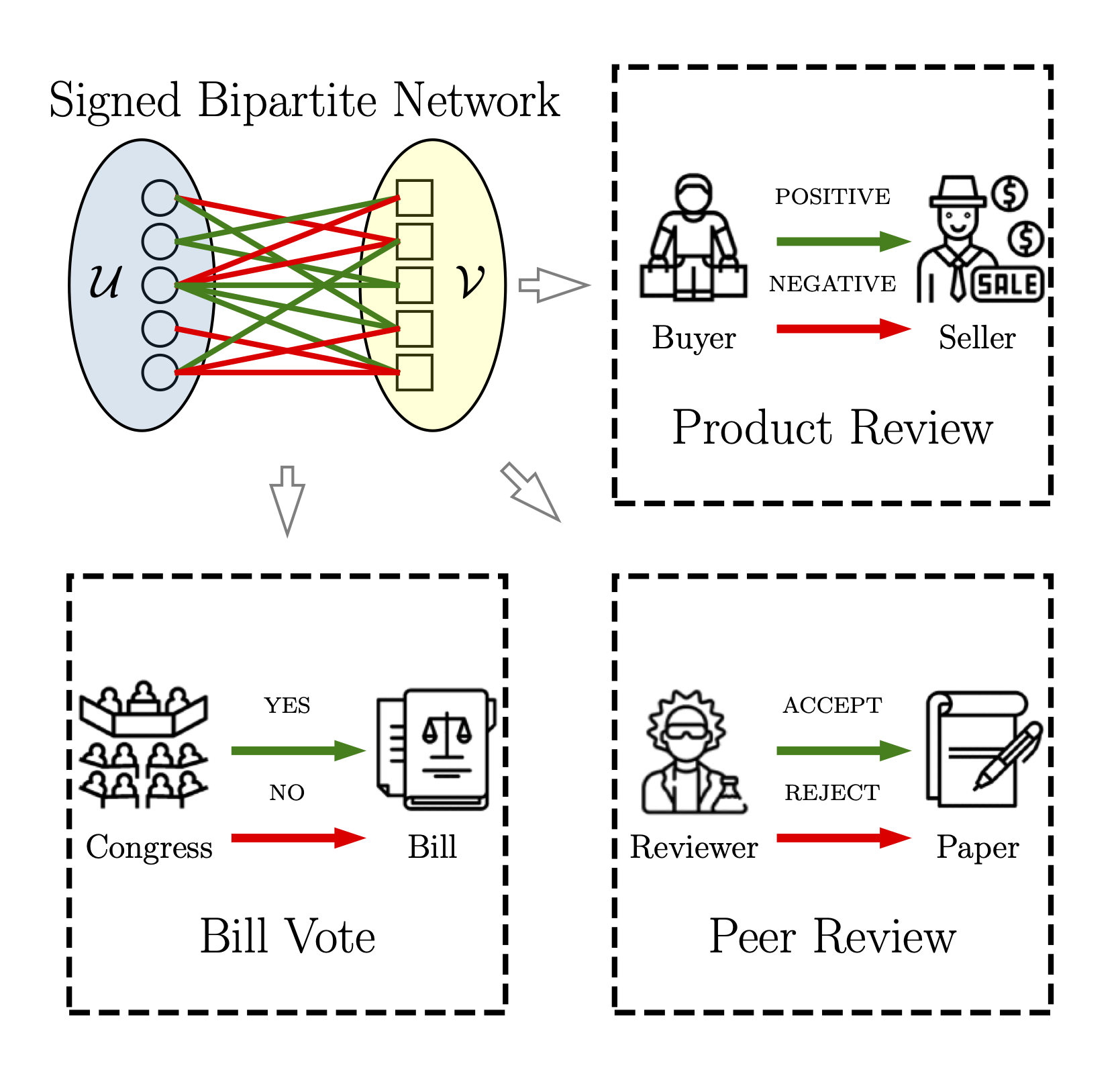Signed Bipartite Graph Neural Networks
Signed networks are such social networks having both positive and negative links. A lot of theories and algorithms have been developed to model such networks (e.g., balance theory). However, previous work mainly focuses on the unipartite signed networks where the nodes have the same type. Signed bipartite networks are different from classical signed networks, which contain two different node sets and signed links between two node sets. Signed bipartite networks can be commonly found in many fields including business, politics, and academics, but have been less studied. In this work, we firstly define the signed relationship of the same set of nodes and provide a new perspective for analyzing signed bipartite networks. Then we do some comprehensive analysis of balance theory from two perspectives on several real-world datasets. Specifically, in the peer review dataset, we find that the ratio of balanced isomorphism in signed bipartite networks increased after rebuttal phases. Guided by these two perspectives, we propose a novel Signed Bipartite Graph Neural Networks (SBGNNs) to learn node embeddings for signed bipartite networks. SBGNNs follow most GNNs message-passing scheme, but we design new message functions, aggregation functions, and update functions for signed bipartite networks. We validate the effectiveness of our model on four real-world datasets on Link Sign Prediction task, which is the main machine learning task for signed networks. Experimental results show that our SBGNN model achieves significant improvement compared with strong baseline methods, including feature-based methods and network embedding methods.
PDF Abstract

